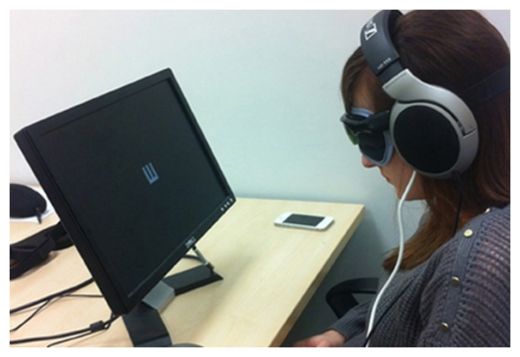
Sensory substitution devices (SSDs) aim to compensate for the loss of a sensory modality, typically vision, by converting information from the lost modality into stimuli in a remaining modality.
The device in the current study, dubbed "The vOICe," is a visual-to-auditory SSD that encodes images taken by a camera worn by the user into "soundscapes," allowing experienced users to extract information about their surroundings to construct an image in their mind.
The researchers, led by Dr. Michael Proulx from the University's Department of Psychology, examined how blindfolded sighted participants responded to an eye test using the device. The participants were asked to perform a standard eye chart test known as the Snellen Tumbling E test, which asked participants to view the letter E turned in four different directions and in various sizes.
Normal, best-corrected visual acuity is considered 20/20, calculated in terms of the distance (in feet) and the size of the E on the eye chart.
However, the study participants were able to perform the best performance possible - nearly 20/400 - even without any training in the use of the device. This limit appears to be the highest resolution currently possible with the ever-improving technology.
"This level of visual performance exceeds that of the current invasive techniques for vision restoration, such as stem cell implants and retinal prostheses after extensive training," Dr. Proulx said.
"A recent study found successful vision at a level of 20/800 after the use of stem cells. Although this might improve with time and provide the literal sensation of sight, the affordable and non-invasive nature of The vOICe provides another option.
"Sensory substitution devices are not only an alternative, but might also be best employed in combination with such invasive techniques to train the brain to see again or for the first time."
A report about the new device, entitled "How well do you see what you hear? The acuity of visual-to-auditory sensory substitution," is published online in the journal Frontiers in Psychology.



Reader Comments
to our Newsletter